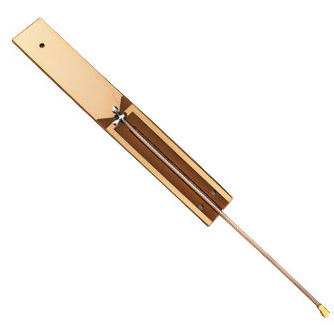PCB antenna power reduction
Reducing the Power of PCB Antennas
PCB antennas are a crucial component in modern wireless devices. They enable wireless communication by transmitting and receiving signals between the device and the surrounding environment. However, this is achieved at a cost - the antenna radiates energy that is drawn from the device's power source, which in turn reduces battery life. Therefore, reducing the power of PCB antennas is a significant consideration for electronic design engineers. This article discusses some of the techniques that can be used to reduce the power consumption of PCB antennas.

1. Minimize Antenna Size
The size of the antenna has a direct impact on its power consumption. In general, a smaller antenna consumes less power than a larger one. This is because a smaller antenna has a smaller capacitive and inductive reactance, which in turn leads to a lower radiation resistance and, thus, a lower power consumption. Therefore, electronic designers should focus on minimizing the size of the antenna while still maintaining its performance to achieve a lower power consumption.
2. Use a Lower Impedance Matching Circuit
The matching circuit is used to match the impedance of the antenna to the output impedance of the transmitter or receiver. A higher impedance matching circuit causes more power to be consumed by the antenna. Therefore, using a lower impedance matching circuit can help reduce the power consumption of the antenna. However, this may affect the efficiency of the antenna and could lead to a reduction in performance.
3. Use a Narrowband Antenna
A narrowband antenna is designed to operate at a specific frequency band within the wireless spectrum. This type of antenna has a lower power consumption than a broadband antenna, as it only radiates at the desired frequency. Therefore, using a narrowband antenna can help reduce the power consumption of the antenna.
4. Implement a Power Amplifier
A power amplifier can be used to boost the signal strength of the antenna. This can increase the range of the antenna, which can help reduce the power consumption of the overall system. However, a power amplifier itself consumes a significant amount of power, so designers should carefully consider the overall power consumption of the system when implementing a power amplifier.
5. Switch On and Off the Antenna
Switching the antenna on and off when it is not in use can significantly reduce power consumption. This can be achieved by using a switch to connect and disconnect the antenna from the transmitter or receiver. However, this technique may increase the latency of the communication, as it takes time to switch the antenna on and off.
Conclusion
Reducing the power consumption of PCB antennas is crucial for modern wireless devices. By minimizing the size of the antenna, using a lower impedance matching circuit, implementing a narrowband antenna, using a power amplifier, and switching the antenna on and off, designers can reduce the power consumption of the system. However, it is essential to consider the trade-offs between power consumption and system performance when implementing these techniques.





